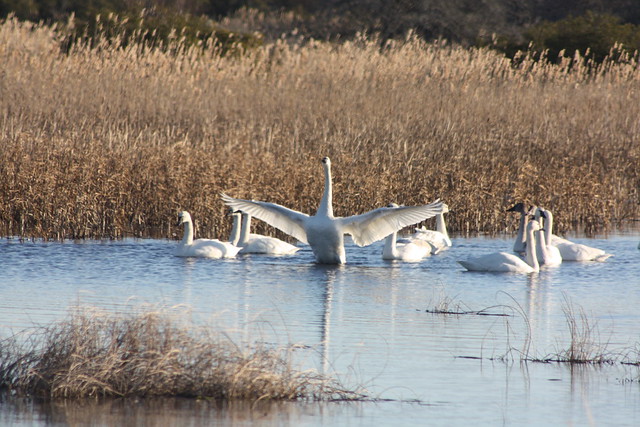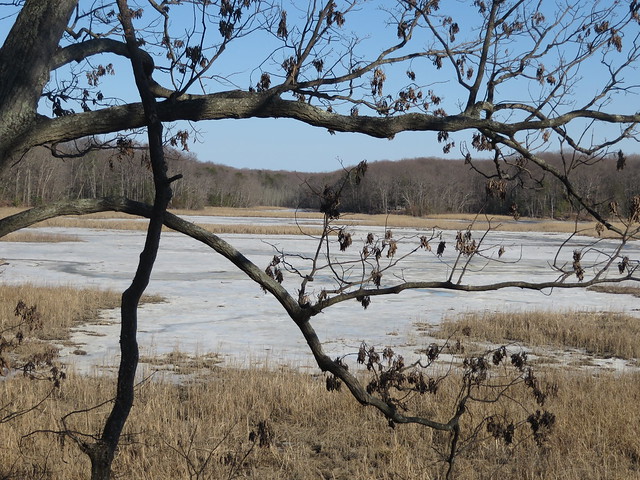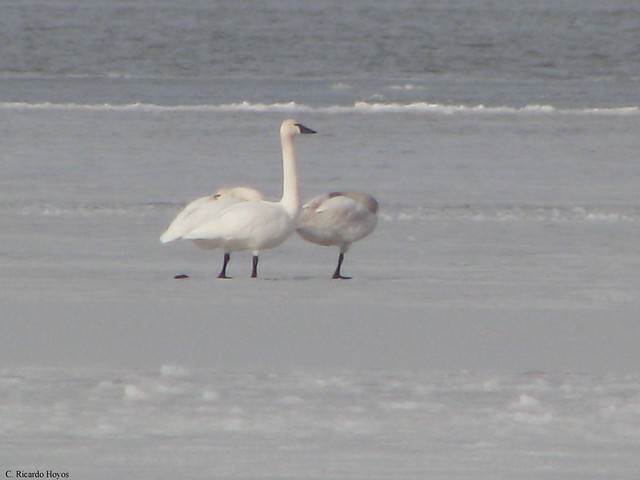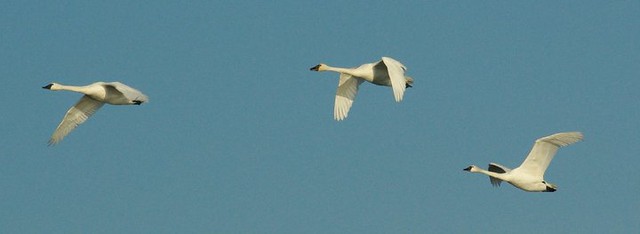Wintertime is a perfect time to see Tundra Swans (Cygnus combianus columbianus) atMason Neck State Park!

Tundra Swans stretching their wings

View overlooking Great Marsh

Pair of Tundra Swans
Tundra Swans are large snow-white birds with black bills and black legs. In contrast to the well-known Mute swan, the neck is not gracefully bent forward like a question mark, but it is as straight as a goose’s neck, only longer. Another difference is that these swans are not mute, they have high-pitched and yet gentle soprano voices.
Their wintering season is October through March. The Mid-Atlantic region (New Jersey – North Carolina) is a prime destination for wintering swans, because it offers rivers, estuaries, bays and numerous marshes where food is abundant and the weather is milder than the Arctic. Some Tundra Swans may start migrating to their breeding sites as early as February. ”Last year they left in mid-March,” said Chelsea DiAntonio, the Biologist at Potomac River National Wildlife Refuge Complex. Their breeding range starts from the northern slopes of Alaska and ends at Hudson Bay of Canada, according to a 2010 study of the eastern population of Tundra swans. It takes them several months to reach their breeding territories. During that time the swans have several stop-overs to replenish their strength.
Tundra Swans are omnivores. They eat water plants, tubers, invertebrates and grain, whenever they can find it. Hydrilla, an aggressively invasive water plant is part of their diet. Swans also consume mollusks, snails, mussels and shellfish. When they arrive in the fall, they eat wild rice from the Great Marsh. “That’s one of the last remaining stands of wild rice; I think that is one of the reasons why they like to hang in Great Marsh,” said DiAntonio. “Other than the fact that it is protected and relatively undisturbed compared to other areas.”
Waterfowl move to the flowing river, because of food accessibility. “It is really not deep out there,” said DiAntonio, “and they know where the shallow parts are; they have been coming here for years.” These birds stay together for both food and safety, because, as everyone knows, safety is in numbers."

Swans in flight
Tundra Swans have very few enemies in Mason Neck – only us, humans, via regulated hunting. They have no predators here, because they are large and no large carnivores can reach them in our region. In contrast, up north in the tundra, where they rear their young, they are much more vulnerable to the attacks of arctic foxes, wolves and other animals, explained DiAntonio. “For the most part they [the swans] don’t have to worry about predators in their wintering grounds,” said DiAntonio. If the swans were smaller, like ducks, they should fear eagles, other raptors and foxes.
These swans are listed as “least concern” by the International Union for Conservation of Nature (IUCN) due to their large and stable populations, but are protected under the migratory bird act. “Hunting is permitted by permit only,” said DiAntonio, but it is forbidden in the Great Marsh, because it is part of the Virginia Department of Game and Inland Fisheries.

Tundra Swans and Black Ducks
Please follow my next post about my own personal experience viewing teh magnificent Tundra Swans in the wild at click here for more information or contact the park at Phone: 703-339-2385, or email here.
Mason Neck State Park is located in Northern Virginia, 7301 High Point Rd., Lorton, VA, 22079
Sources:
- Migration routes and Bird Conservation Regions used by Eastern Population Tundra Swans Cygnus columbianus columbianus in North America.
- Migratory bird act
